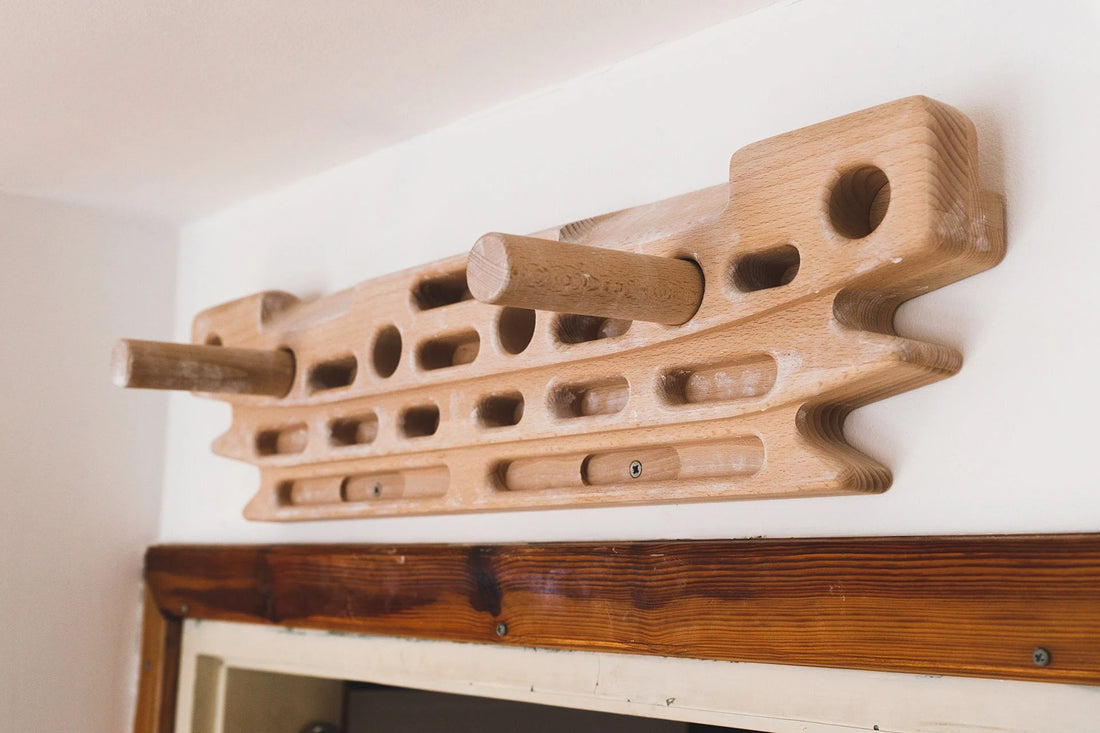
Common Hangboard Mistakes and How to Avoid Them
## Common Hangboard Mistakes and How to Avoid Them
### Introduction
Hangboarding is one of the most effective training methods for climbers looking to improve grip strength and finger power. However, many climbers, especially those new to hangboarding, often make mistakes that can hinder their progress or even lead to injuries. In this article, we’ll discuss some of the most common hangboard mistakes and provide tips on how to avoid them, ensuring you get the most out of your training.
### 1. Skipping the Warm-Up
**Mistake**: Many climbers jump straight into hangboarding without properly warming up their muscles and tendons. This increases the risk of injury.
**Solution**: Always dedicate 10-15 minutes to warming up before your hangboard session. Engage in dynamic stretches, light aerobic activity, and easy climbing to increase blood flow to your fingers, hands, and forearms.
### 2. Poor Grip Technique
**Mistake**: Using improper grip techniques can lead to strain and ineffective training. Some climbers may over-rely on one grip type or fail to engage their core.
**Solution**: Familiarize yourself with different grip types, such as open hand, half crimp, and full crimp. Practice switching between them during your sessions. Also, remember to engage your core and maintain a stable body position while hanging to distribute weight evenly.
### 3. Not Listening to Your Body
**Mistake**: Pushing through pain or fatigue is a common mistake that can lead to serious injuries, particularly in the fingers and hands.
**Solution**: Pay close attention to your body’s signals. If you feel sharp pain, discomfort, or excessive fatigue, take a break or modify your training. It’s crucial to differentiate between discomfort from training and pain from injury.
### 4. Lack of Progression
**Mistake**: Many climbers either progress too quickly, increasing intensity too soon, or remain stagnant by not challenging themselves enough.
**Solution**: Implement a structured training plan that gradually increases intensity. Use progressive overload by extending hang times, decreasing rest intervals, or adding weight as your strength improves. Set specific, achievable goals for each session to keep yourself challenged.
### 5. Ignoring Rest and Recovery
**Mistake**: Overtraining is a common issue, especially among dedicated climbers. Some may feel compelled to train frequently, neglecting necessary recovery time.
**Solution**: Schedule regular rest days between hangboard sessions. Allow at least 48 hours of recovery before your next hangboard workout. Incorporating active recovery, such as light stretching or yoga, can also aid in muscle recovery and flexibility.
### 6. Focusing Solely on Strength
**Mistake**: Many climbers concentrate exclusively on strength training while neglecting endurance and technique, leading to imbalances.
**Solution**: Incorporate a mix of strength, endurance, and technique workouts into your hangboard routine. Include endurance-focused sessions where you hang for longer durations with shorter rests to build finger stamina alongside strength training.
### 7. Not Tracking Progress
**Mistake**: Failing to log training sessions can lead to missed opportunities for improvement and can make it difficult to identify what works best for you.
**Solution**: Maintain a training journal or use an app to track your hang times, grip types, and how you felt during each session. Regularly reviewing this data will help you understand your progress and make informed adjustments to your training plan.
### 8. Using Improper Equipment
**Mistake**: Using an unsuitable hangboard or improper setup can lead to ineffective training or injury.
**Solution**: Invest in a quality hangboard that offers a variety of holds suited to your skill level. Ensure it’s securely mounted at the appropriate height and that you have a safe landing area (like a crash pad or mat) beneath it.
### Conclusion
By being aware of these common hangboard mistakes and taking steps to avoid them, you can maximize the effectiveness of your training and minimize the risk of injury. Remember, hangboarding is a journey that requires patience and consistency. Focus on proper technique, recovery, and tracking your progress, and you'll see significant improvements in your climbing performance. Happy training!
